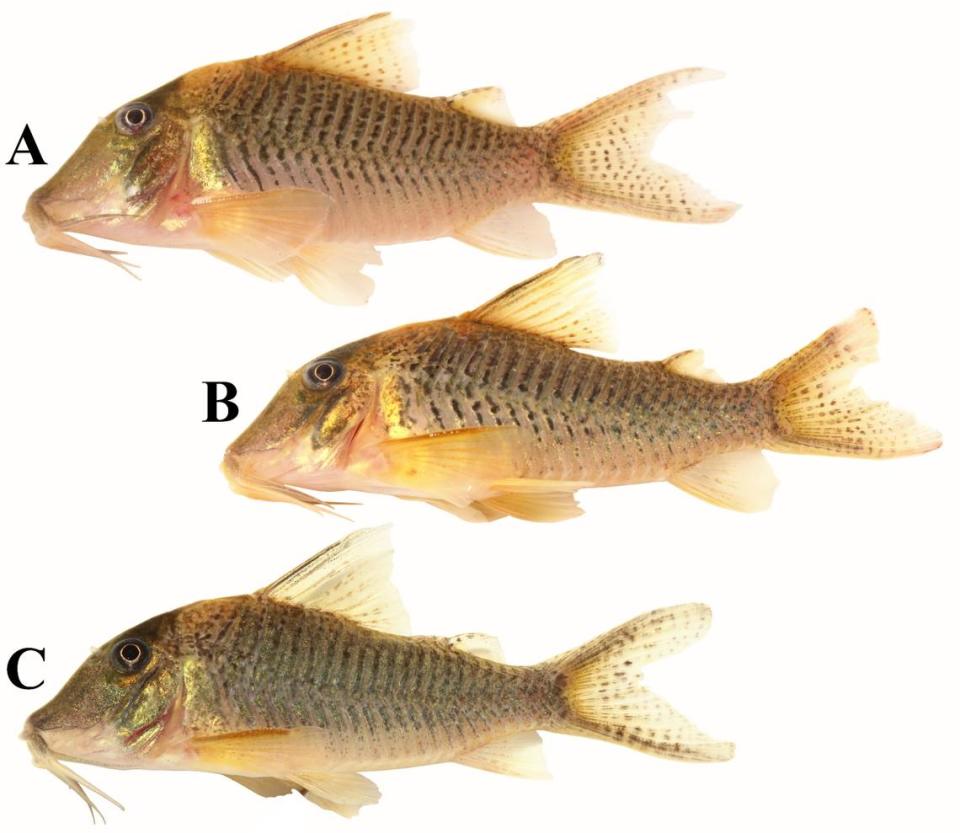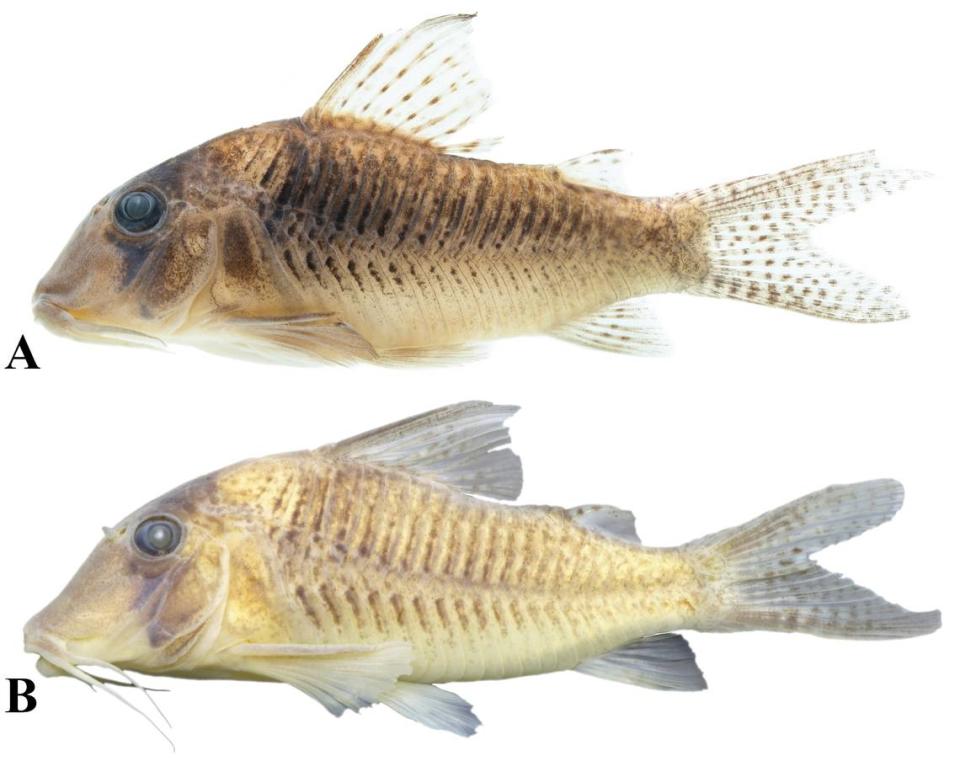An “armored” creature meandered through the slow-moving water of a stream in Brazil. Maybe it was a glimmer of its iridescent exterior, or its distinctive “mask-like” pattern, but as the creature swam, a researcher noticed and captured it.
Scientists were exploring the Xingu River basin, searching for species of Corydoras, a type of armored catfish. That’s where they found 18 catfish that did not belong to any existing species, according to a study published Feb. 12 in the journal Neotropical Ichthyology.
The 18 specimens turned out to be a new species of long-snouted Corydoras: Corydoras caramater, researchers said.
Discover more new species
Thousands of new species are found each year. Here are three of our most eye-catching stories from the past week.
→ ‘Large’ metallic creature — thought extinct for 100 years — rediscovered on island
→ Spiky ‘blue-headed’ creature found sleeping in forest of Peru
→Pregnant creature — with gold eyes — found on Australia island
Experts distinguished the new species from other type of Corydoras by their “mask-like” pattern, the “small, irregular” blotches along their sides and the small “triangular fleshy flap” at the corner of their mouths.
Though the 18 specimens had similar characteristics, they varied in size and some had more pointed snouts than others, scientists said. The fish ranged in size from approximately 1.2 inches to about 2 inches.
The new species has a “light yellowish orange” body, according to researchers. They have a distinctive “mask-like blotch” circling their head and crossing over their eyes.

Their bodies are “covered by greenish yellow iridescent” spots, experts said.
Photos show the uniquely pattern creatures. When preserved in alcohol, the catfish are a duller color and lose their iridescence.

The catfish have plates or scales covered with thorn-like projections, known as odontodes, covering their bodies, scientists said.
Researchers found the new species in small streams connected to rivers in the Xingu River and Tapajós river basins, which are in Brazil’s northeastern Pará State.
Catfish were seen swimming in shallow areas with slow to moderate currents, according to the study. The streams had fine sand and gravel grounds and were filled with leaves and branches.
The study’s authors said they named the new species by combining the Latin words “cara,” meaning dear or beloved, and “mater,” meaning mother.
“This is a small tribute to these strong women, who work hard and are still responsible, often alone, for tenderly raising their children,” the researchers said.
‘Large’ colorful creature — last seen 85 years ago — rediscovered. See ‘rare’ find
Forest creature — with ‘bluish green’ bones and red-streaked eyes — is a new species
‘Large’ metallic creature — thought extinct for 100 years — rediscovered on island
















